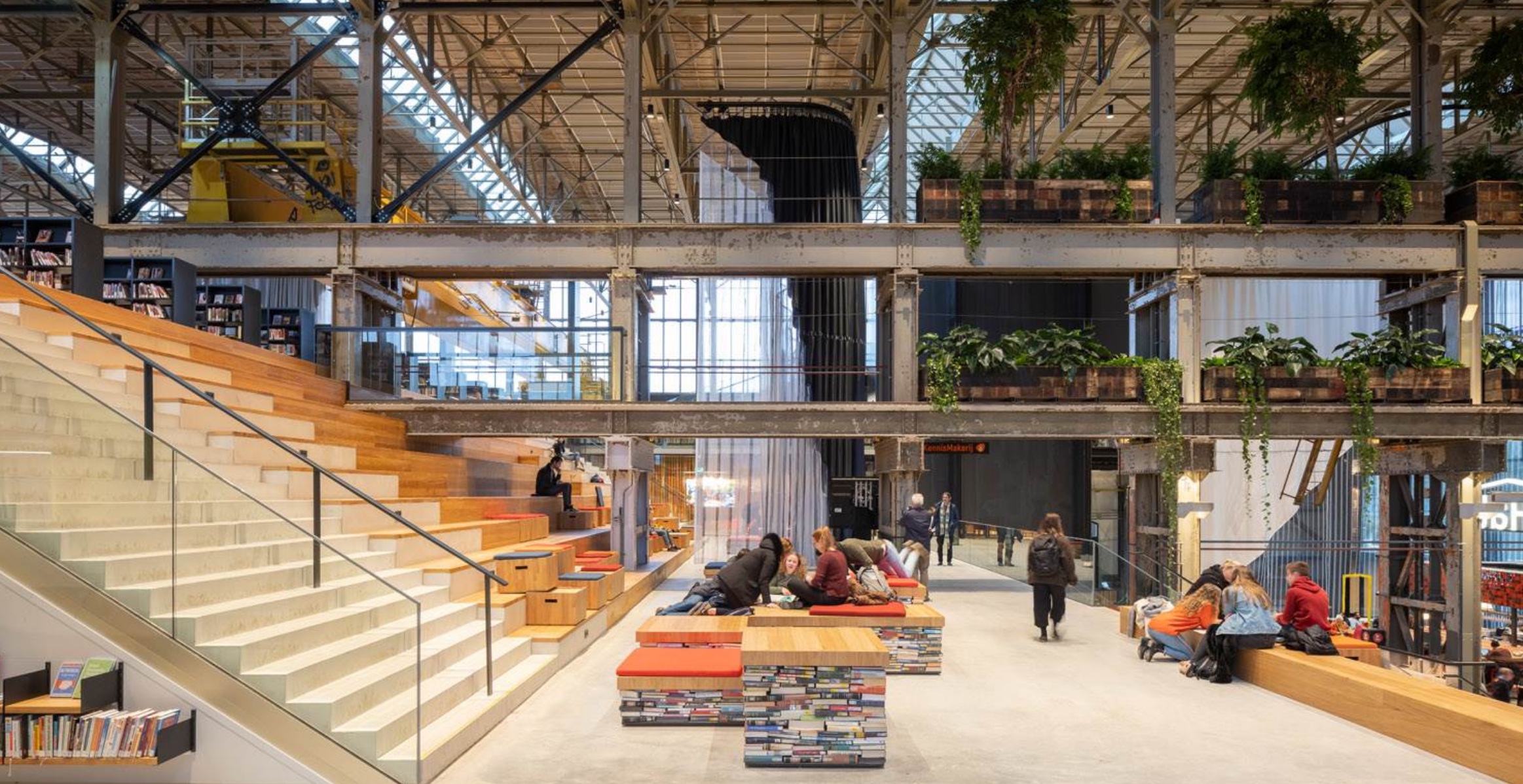
Netherlands LocHal Library Wins World Building of the Year
The LocHal Public Library, located in Tilburg, Netherlands, had been open for about 11 months when it was awarded the prestigious World Building of the Year at the World Architecture Festival in December.

The building, a vast expanse of glass and steel from the apex of the industrial age, dates back to 1932 and its original function as locomotive storage for the Dutch National Railways.
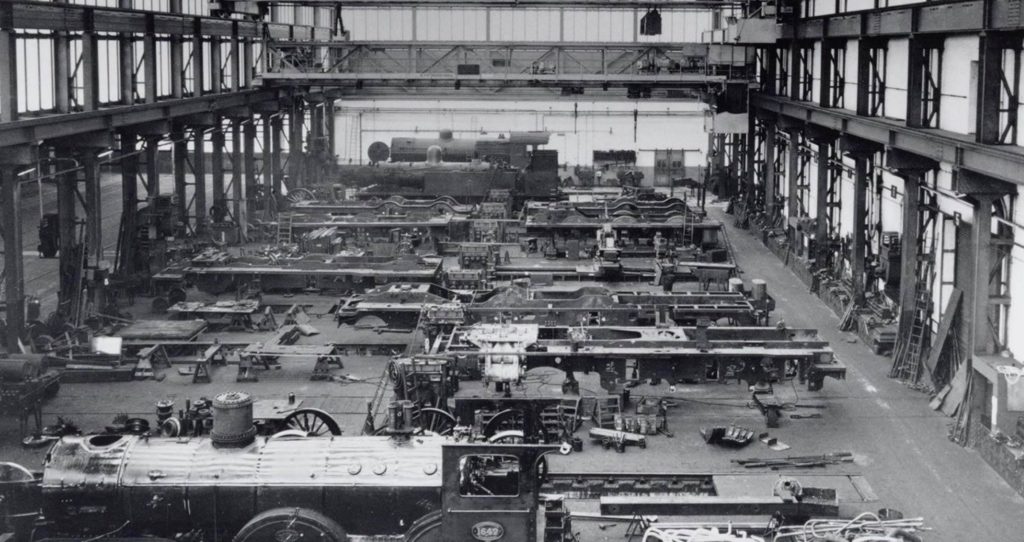
With its floor to ceiling glass and terrific steel girders, the original structure provided the blueprint for the renovation, with a consortium of architects, engineers, and designers, (Civic Architects, Braaksma & Roos Architectenbureau, Inside Outside i.c.w TextielMuseum, and Mecanoo Architecten) collaborating to turn the barren warehouse-like space into a nexus of public activity.
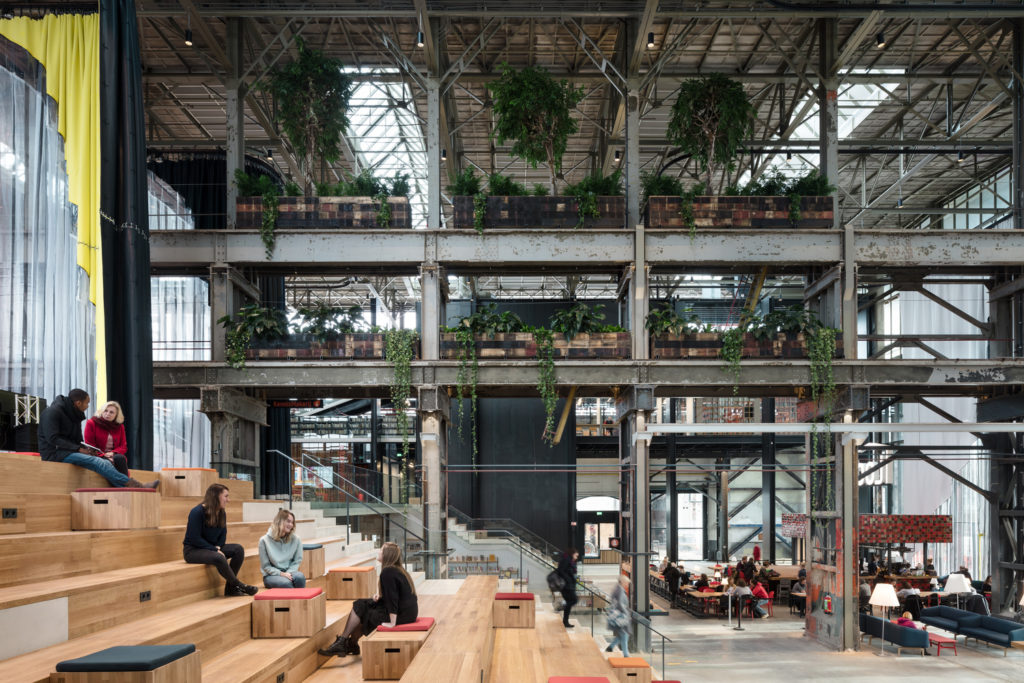
Now characterized as “Tilburg’s Living Room,” LocHal’s broad appeal is owed to the way it shapes space—offering a variety of ways to experience the library.
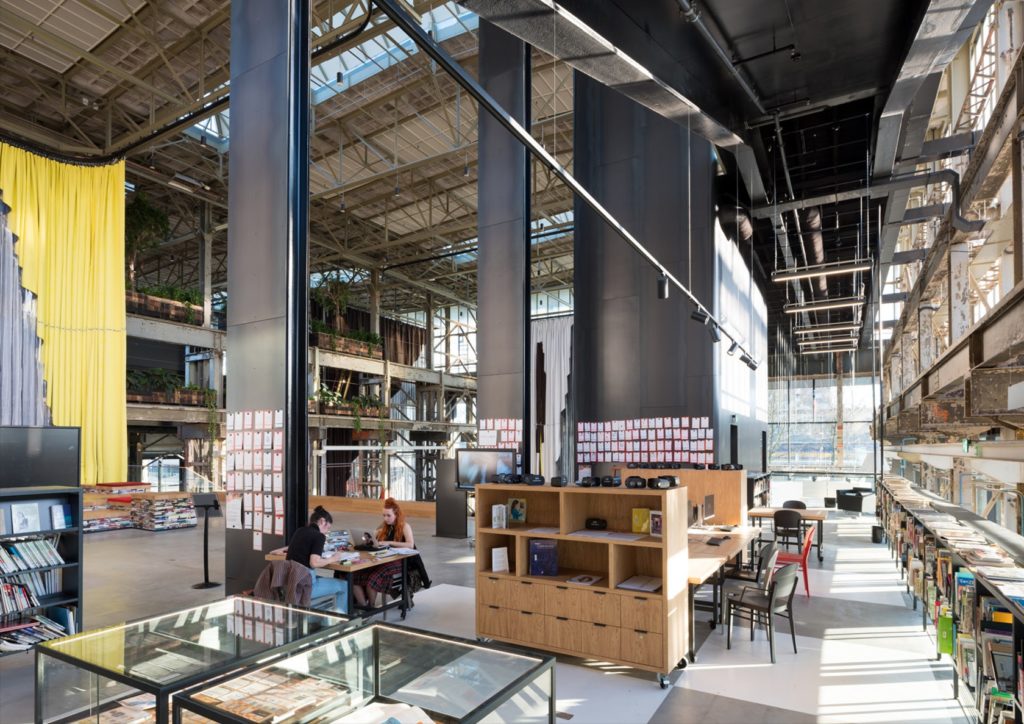
The main level features a network of wooden staircases—broad oak steps with movable modules that not only facilitate passage upward, but also offer flexible seating, including auditorium space for up to 1,000 for conferences, educational forums, and artistic/cultural events.
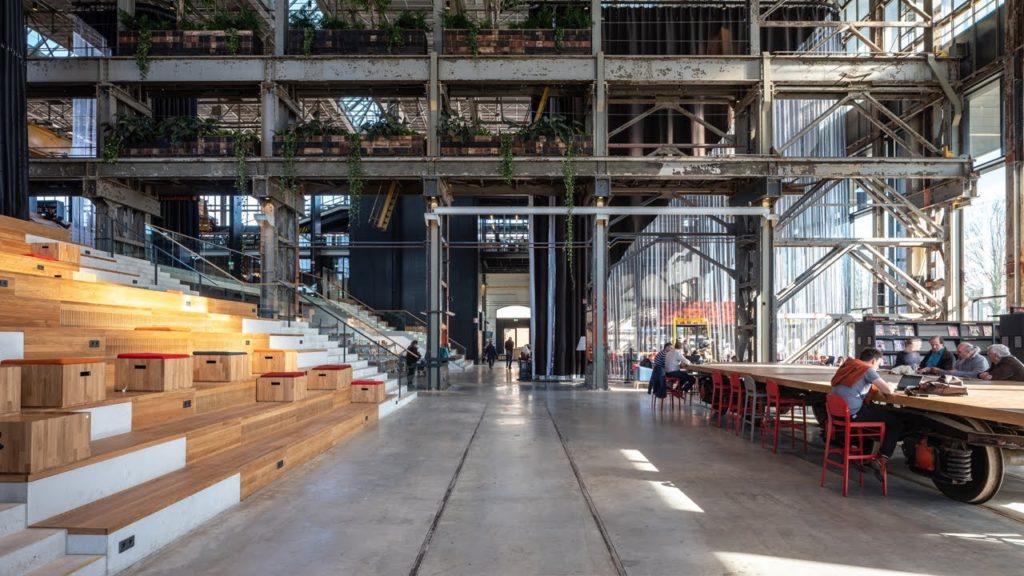
The central staircase is flanked by a bar and coffee kiosk, complete with three mobile tables. Designed to function like a train’s undercarriage, they roll along the original tracks, forming an extension of the bar if needed and/or rolling all the way outdoors to create a catwalk/stage area.
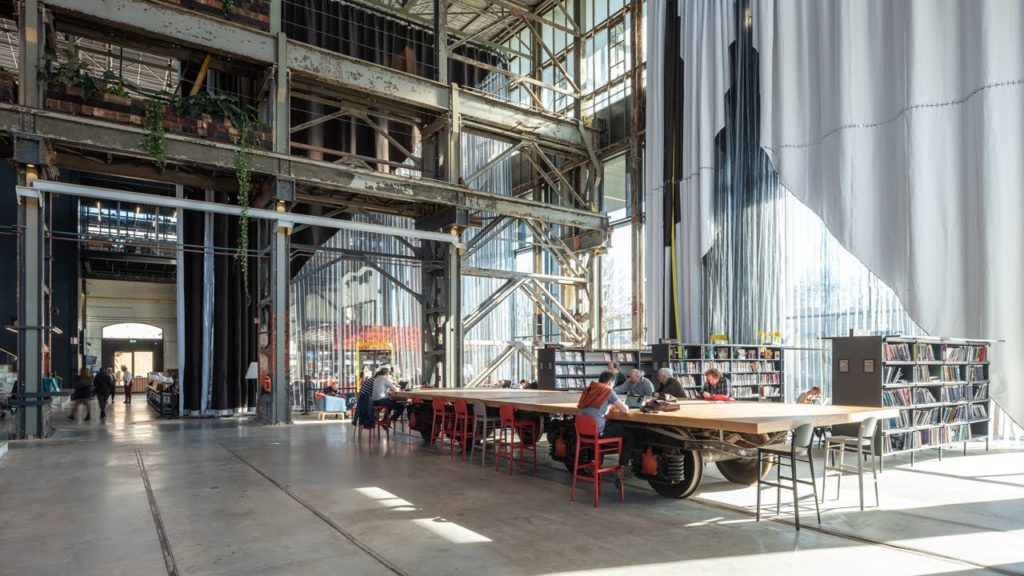
Levels two and three house stacks, collections, private study areas, a children’s section, and different knowledge “labs,” including a Food Lab, Word Lab, DigiLab, and Heritage Lab. These labs further the library’s philosophy of “curatorship”: “facilitating interaction with human experts to offer a deeper, richer way to acquire knowledge and information.”

Additional differentiation of space is achieved via floor-to-ceiling textile installations. These mechanical curtains carve out smaller-scale zones from the cavernous space, conferring a degree of intimacy while also attenuating sound and softening the light: “As the sun hits their transparent surfaces, the curtains turn into tall cascades, becoming an integral part of the spacious interior landscape.”
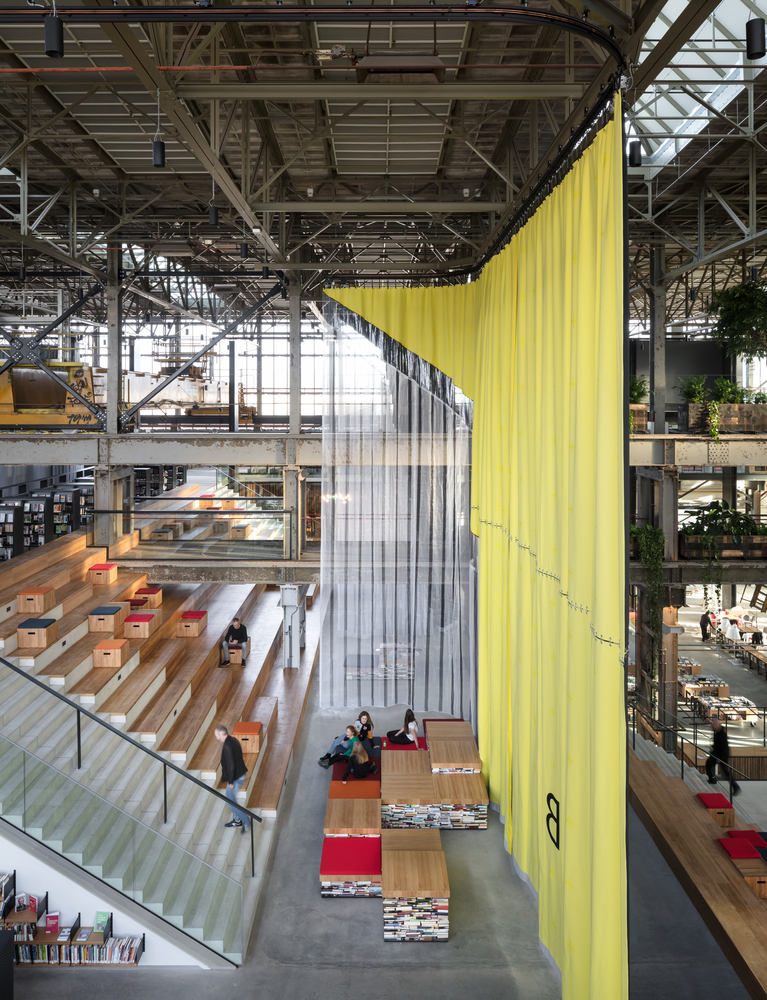
Lastly, LocHal achieves relative energy efficiency by employing a maxim to “heat people, not space.” Warmth is delivered directly to library users through five distinct climate zones.
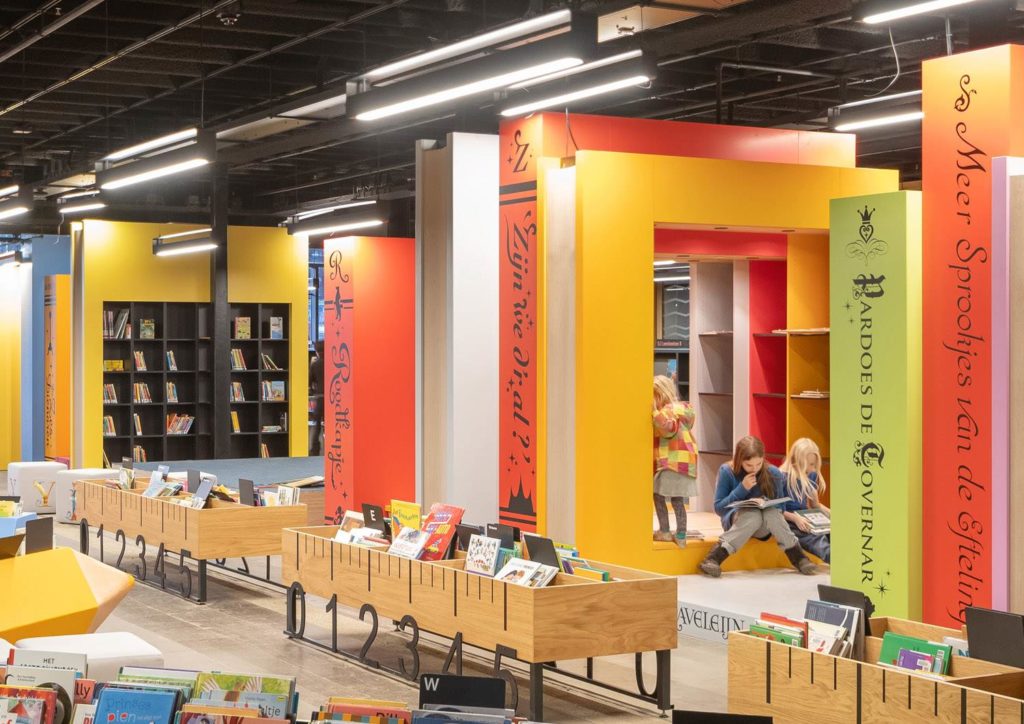
See Civic Architects to read more.
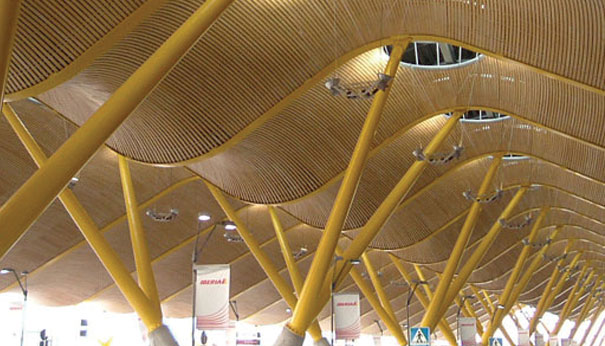

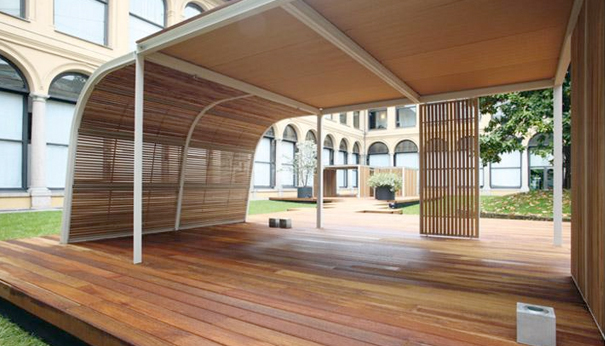
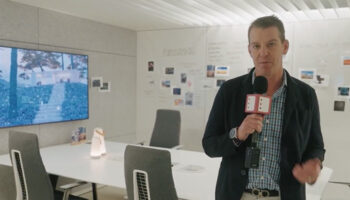
Leave a Reply